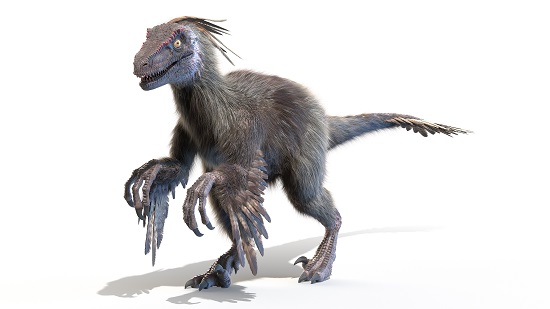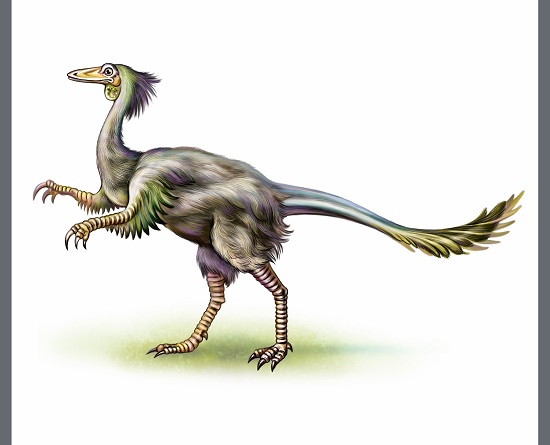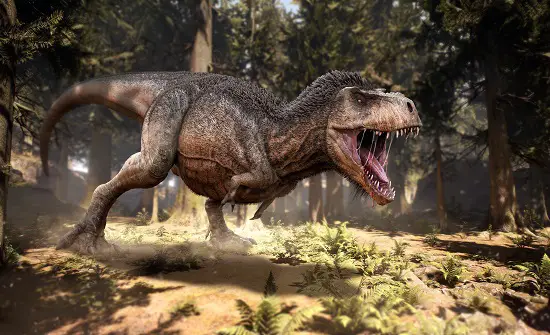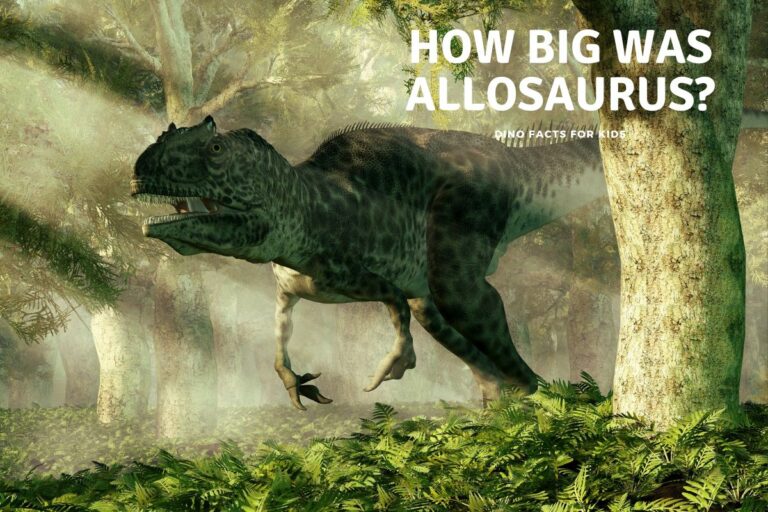Did Dinosaurs Have Ears?
When looking at pictures of dinosaurs, it’s not immediately obvious whether they have ears as other animals do. Some have features around their head, but how can we be sure they actually had ears, they clearly would have been able to hear or decent sound in some way. We take a look at how dinosaurs could hear, and if any dinosaurs did have ears in the article below.
Dinosaurs did have ears. However, like modern reptiles, their ears didn’t protrude like some other animals – dinosaurs had intricate nerve canals in the skull and possessed inner ear bones called stapes which allowed them to hear. These sent vibrations throughout the ear resulting in an acute sense of hearing.
So, what more do we know about dinosaurs having ears? Perhaps there is more to learn about these incredible animals and how they could hear their prey / other dinosaurs. If they did hear like reptiles then how does that work. We take a look at these questions below.

How Do We Know Dinosaurs Had Ears?
So how is it that we can be so certain dinosaurs had ears when they existed on our planet millions of years ago? There are several ways we can be sure of this including the following:
• Compelling fossil evidence – we know from fossil records that dinosaurs not only had inner ears but also that they had very well-developed hearing. This is apparent due to their amazing hunting capabilities, particularly found in the predatory T-Rex.
• Modern scanning techniques – we now know through using in-depth scanning techniques that dinosaurs had ears but that their hearing was as much used for balance as listening for sounds of prey or predators throughout the Cretaceous period.
• Dinosaurs’ closest living relatives are reptiles and birds, most of whom have inner ears rather than those that protrude. With this information in mind, it is a fair assumption that dinosaurs had similar ears to that of comparable creatures such as snakes and birds.
No Evidence of protruding ears: However as ears are made of cartilage, at least the parts on the outside of animals, this does not fossilize particular well and its absence can be put down to that. Well yes and no, ( mainly no) the absence of fossilized protruding ears can also be put down to dinosaurs not having them in the first place. As we mention protruding ears are very common in mammals but try to name a bird or reptile with them…. So these comparisons to modern animals are often very useful when looking at how extinct animals looked.
While we can never know for sure without the invention of the time machine, it’s fair to say after extensive research and the above reasons that dinosaurs had ears that were internal rather than protruding.
Where Are Dinosaur Ears Located?
Dinosaur ears are located inside their skull, rather than outside like many other animals, especially mammals.
Most dinosaurs had an eardrum that was connected to a bone which allowed vibrations to carry sound through the skull and enable the dinosaurs to hear. Dinosaur ears would have been near the brain and on either side of their head to enable good balance as well as all-around hearing.
What Did Dinosaur Ears Look Like?
Dinosaur ears were not visible, as they would have been hidden inside the dinosaurs’ skulls. It’s impossible to know for sure what they looked like, but we know that they had an eardrum and bones which transmitted sound via vibrations and very unlikely they were obviously visible from the outside.
Some dinosaurs look like they have outer ears such as the triceratops, however, this was more of a bony frill which protected its neck and was used to attract mates. However, we cannot know for sure whether some dinosaurs had any ear cartilage as this wouldn’t have been easily preserved in fossils due to the absence of bone.
Could Dinosaurs Hear Well?
We can make an educated judgement that dinosaurs could hear very well, as they are known to have been prolific hunters and their prey animals would have to be able to hear them coming as one of their defenses. They would have needed excellent hearing to listen out for their prey, as well as other dinosaurs that may have been hunting them.
Similar animals with internal ears are known to have good hearing, such as snakes and birds. These animals rely on their hearing to survive which tells us that dinosaurs are likely to have done the same. The size of these ear cannels and the sophistication of the bones within also give us an idea to the ability of different dinosaurs.
What Dinosaur Had The Best Hearing?
Although it is not possible to conduct hearing tests on animals that have been extinct for at least 66 million years it is possible to make some educated assumptions on the dinosaurs that were likely to have had the best hearing. While predators would need a highly developed sense of hearing, as well as sight and and smell ( if your food has the ability to run away then these are kind of a prerequisite)
There were a a pair of predators that seemed to develop very very advanced sense of hearing. these were the Llukalkan aliocranianus and the Shuvuuia deserti and we will take a brief look at these two super hearing dinosaurs below.
Llukalkan Aliocranianus
Llukalkan has an absolutely excellent first name, it translates from Mapuche language into “the one who causes fear” and was discovered in Patagonia in 2015 but was described in 2021. However s cool as the last name was its the second name that is more relevant.
Aliocranianus means, in Latin, ‘different skull’, and when examining this the scientists came to the conclusion not only was this 5 metres long carnivores dinosaur a fearsome predator it also had incredible hearing. there were areas within in the ear that had not been found in any other dinosaur, and these would have given the Llukalkan exceptional hearing.
It had a shorter skull, and although resembled, at least a little, like a shorter T rex, its head was different. It had space for an air filled sinus region in in middle ear. This would have allowed Llukalkan Aliocranianus to hear things differently. Its sense of hearing has been compared to that of a crocodile by Dr Ariel Mendez who works at the Patagonian Institute of Geology and Palaeontology. Which would have been much better than most other dinosaurs.

Shuvuuia Deserti
While the Llukalkan was a large dinosaur the Shuvuuia Deserti was much much smaller. However, it can still challenge and we think successfully, the Llukalkan for the title of dinosaur with the best hearing and we explore the reasons below.
Shuvuuia, or desert bird, was a bird like theropod dinosaur that lived in what is now Mongolia 75 to 81 million years ago. It is thought to be nocturnal which we look at more detail in our where there any nocturnal dinosaurs article here on the site.
As we mentioned it was smaller, much smaller than its competition for dinosaur with best hearing the llukalkan, it was about 2 feet in length as was actually one of the smallest non avian dinosaurs and had a covering of feathers.
What suggested it had super hearing, and not just when compared to other dinosaur species, was the discovery that in the inner ear after 3d scans, it had a very large Lagena (without going into too much detail the larger this area in an ear is the better the hearing of the animal) This was the biggest Lagena of any dinosaur relative to size.
What was even more amazing is that when they compared this to 100 other species of modern birds the only one that is even close in size was the modern Barn Owl. A nocturnal bird of prey that hunts by sound and sight.
Which leads us onto the second point, Shuvuuia Deserti may well have had the best hearing of any dinosaur ever, but its super powers didn’t stop there, They then looked at its eyes and found out that not only did Shuvuuia Deserti possess amazing hearing abilities it also had fantastic night vision as well.
It is considered a nocturnal dinosaur and clearly it had evolved both excellent hearing and sight senses to adapt to its environment.
How did Dinosaurs Develop their Hearing.
There are two species that are descended from the actual ancestor of dinosaurs ( the archosaur) that are alive today, the crocodilians like the crocodile and the alligator and birds, which were dinosaurs 200 million years ago.
Although their hearing is now thought to have developed to a more advanced level that their dinosaur ancestors, it is thought that they both stemmed and were passed down from the archosaur ancestor 250 million years ago.
This conclusion was reached by testing the response to sounds by putting headphones on sleeping alligators ( we are not joking here, and pleased we were not part of that experiment!!) and birds and motoring how their brains reacted to them.
It was discovered that the reaction in the brain was remarkably similar, and that it was very likely that both crocodiles and birds and therefore dinosaurs inherited their hearing ability from their archosaur ancestors 250 million years ago.
Did Dinosaurs Have Ear Bones?
If dinosaurs didn’t have external ears, did they have any ear bones like other animals?
Scientists have found that dinosaurs had a tiny inner ear bone called a Stape which has been preserved in dinosaur remains and fossils.
It is this ear bone which transmits sound vibration from the inner ear to the drum, giving dinosaurs excellent hearing and hunting abilities.
Examples of Ears in Dinosaurs?
Now that we know that dinosaurs certainly had ears, what do we know about specific dinosaurs and their hearing capabilities?
T-Rex
The T-Rex is arguably the most well-known dinosaur; the North American apex predator that is featured prominently in popular culture and media such as Jurassic Park and King Kong.

We know that the T-Rex was likely to have had hypersensitive hearing, as its cochlea (a bone within the inner ear) was exceptionally long in comparison to other dinosaurs. This could be a prominent reason why the T-Rex’s hunting capabilities were superior to its fellow dinosaurs.
Triceratops
Triceratops look like they have ears, with a large frill surrounding the top of their head, however, these dinosaurs also had internal ears just like the T-Rex.

Their ears were situated just behind their large frill, close to the jugal. A common mistake is to put them where the Temporal Finestra is situated, however, this would be incorrect.
Itemirus
The Itemirus was a theropod dinosaur from the late Cretaceous period. They are often compared to raptors in size and had bird-like features such as feathers on its tail and wings.
Researchers have extensively investigated this dinosaur using modern scanning techniques, and have concluded that the Itemirus’ inner ear labyrinth was as much for balance as it was for hearing.
Conclusion
To summarize, we know from years of extensive research by scientists that dinosaurs certainly had ears, and that these were situated inside the skull which explains why so many people believe they didn’t have ears at all.
It is impossible to know whether any species of dinosaur had external ear cartilage as this material wouldn’t be preserved as easily as bone would. However, through our knowledge of similar animals such as reptiles and birds, we can make well-informed assumptions that most dinosaurs had hyper-sensitive inner ears for hearing.
Some of the best hearing abilities in dinosaur species was reserved for predatory species like Llukalkan, T-Rex and the incredible Shuvuuia but whether super powered or regular hearing ears, Dinosaurs certainly had ears, you just wont seem them sticking out the site of their heads like a 40 foot long dog!
References
- https://www.tandfonline.com/doi/full/10.1080/02724634.2020.1877151
- https://exploresound.org/2022/01/what-did-dinosaurs-hear/
- https://www.discovermagazine.com/planet-earth/how-did-dinosaurs-hear-the-world-alligators-give-us-clues
- https://www.newscientist.com/article/2276926-owl-like-dinosaurs-had-remarkably-good-hearing-and-night-vision/
Hi, I am Roy Ford a General Studies and English Teacher who has taught all over the world. What started as a fossil collection became a great way to teach, motivate and inspire students of all ages and all over the world about dinosaurs and from that and children’s love of dinosaurs came the site dinosaur facts for kids, a resource for all ages.






